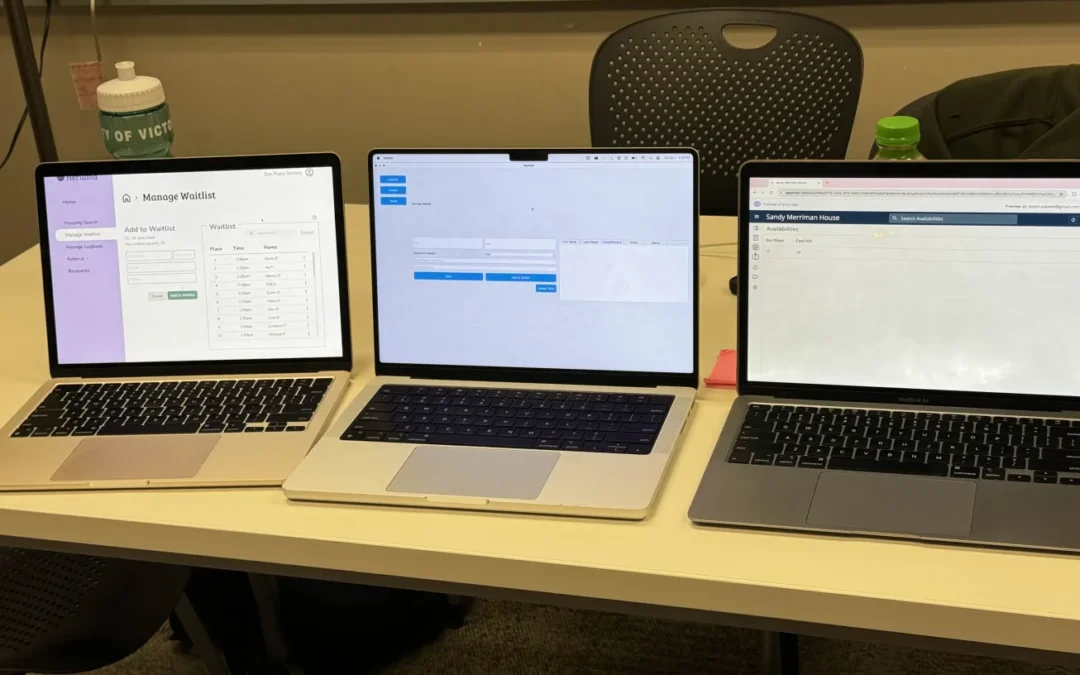On the first day of our second sprint, we created a Gantt chart, and were fairly pleased with it—here was a centralized location where we could visualize the entire trajectory of our project, and it looked achievable. We sketched out ample room for iterative prototyping—cycles of going into shelters one week, and updating our prototype based on their feedback in the next.
But writing down your intentions in a Gantt chart doesn’t guarantee anything when one key variable is outside of your control: other people’s time. We’d hoped to have put our prototype before front-desk staff and received some feedback by now, but time moves differently for people who have demanding full-time jobs that do not revolve around the Herluma project. We were excited after meeting the Director of Housing at Our Place Society, who supported our idea and indicated that she’d arrange for us to meet some of her staff. However, in the week since then, the lack of response has been somewhat dispiriting. We couldn’t fault anyone, aware of the immense workload of both her and her staff, but we decided that given our limited timeline, we needed to be a little more insistent. We can take inspiration from our first sprint—when we couldn’t reach shelters by email or phone, we bused downtown, walked up to the front desk, and found that some staff were happy to participate in an impromptu interview. If no meeting materializes by the start of the next sprint, we’ll attempt to create one by walking into shelters, prototype in hand, and asking the front desk staff for quick feedback.
The silver lining is that the time we weren’t spending getting feedback inside the shelters allowed us to create a prototype made in Google AppSheet, a more palatable version of the barebones Google Sheets prototype we had initially planned to pilot in shelters. We also spent a few days exploring how we’d create a mobile app version of our final product that could function offline. We adopted this as a high-priority requirement following the suggestion of the Director of Housing at Our Place Society, but eventually we came to the realization that, while we highly valued her input, she was only one user and not the primary user of the mobile app. Would front-desk staff, the people a mobile app is meant to help, even want to use it? Was this something they really needed? Would it improve upon their current methods? Until we validate these questions, we’re ranking it low-priority. The mobile app may well eventually become one of our requirements, but we shouldn’t have adopted it as one so quickly.
We also had the pleasure of meeting Daniel and Jorge, who have industry experience in project management and software development, respectively. It’s exciting and inspiring, both to hear about the paths they’ve taken and to know that they’re offering us time out of their day to mentor us. They are among an abundance of inspiring, helpful people we’ve been lucky to meet so far, and we’re excited to learn from even more people in the next sprint!

